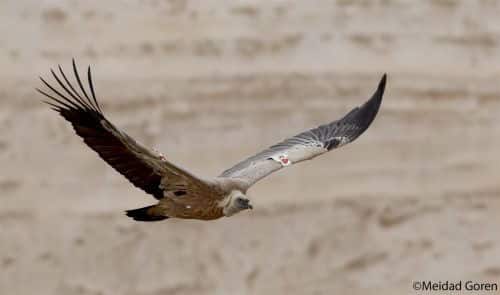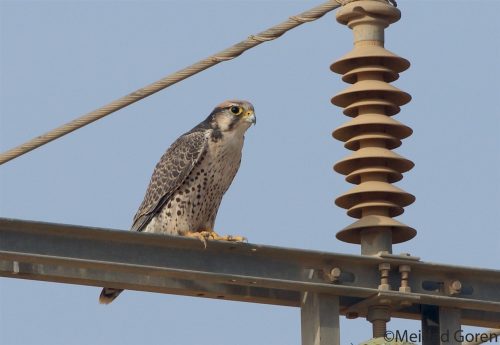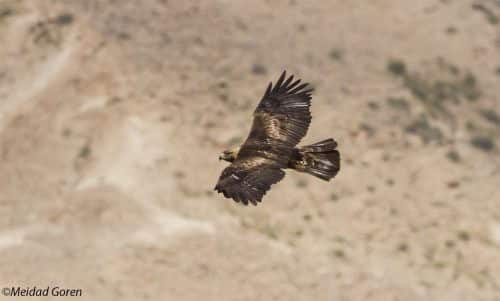While in 2002, 38 species were in the three most severe degrees of extinction, in an update to the Red Book of Birds in Israel, it was found that there was a 71 percent increase in their number, and today there are 65 species in the most severe degrees of extinction. And there is also good news - the condition of 40 other species has improved

The findings of the update of the Red Book of birds in Israel will be presented for the first time, at the 38th ornithology conference of the Society for the Protection of Nature and Tel Aviv University, which will be held on December 18, at the university, and will be uploaded to an innovative website, which will be open to the public.
These days, the process of updating the Red Book of Birds in Israel, which was first published in 2002, has ended. Experts from the Science Division of the Nature and Parks Authority and the Ornithology Center of the Society for the Protection of Nature have worked for three years, with the help of experts from the Academy and dozens of birders, in order to map and classify the degree of danger of extinction viewed from birds nesting in Israel. The evaluation methods follow the recommendations of the International Nature Conservation Organization IUCN, and were perfected in this project, by developing databases and advanced computer tools, which allow accurate analysis of changes in the population size of the various species over time as well as the changes in their spatial distribution in Israel. The Nature and Parks Authority and the Society for the Protection of Nature explain that the development of these tools will allow for a more accurate assessment in the future, an advanced update capability, and a more precise direction of the nature conservation bodies in Israel, to the necessary actions and interfaces, in order to prevent the extinction of these bird species.
According to the Nature and Parks Authority and the Society for the Protection of Nature, making the information accessible through a dedicated and dynamic website will allow it to be presented to interested parties, among government officials, planning institutions, the education system and the general public and thus help preserve these important national values, even for future generations.
The update shows that out of 213 nesting species in Israel, 65 species are estimated to be at various levels of danger of extinction. The endangered species are divided into 3 categories, which differ from each other in the level of probability of extinction in the coming decades - 1. Severely endangered, 2. Endangered, 3. Vulnerable.

In the previous Red Book (2002), there were 38 species in three of the severe risk categories, and now, as mentioned, their number has increased by 71 percent, to 65.
Species that were critically endangered (CR) in 2002 – 15, compared to their number today - 21
Species that were in danger of extinction (EN) in 2002 – 8 compared to their number today - 13
Species that were in a vulnerable state (VU) in 2002 – 15, compared to their number today - 31.
Out of 80 species that were defined as not at risk (LC) in 2002, 16 species of them were added to the Red Book (20%), 7 of them were added to one of the three severe risk categories. In other words, many species that were common in Israel two decades ago are now in danger of extinction.
In an examination of the current status of the 38 species included In the three severe risk categories in the previous Red Book (2002): the situation of 12 species worsened and accordingly the risk category of their extinction increased. 3 species even became extinct as nesters in Israel (Zamiri cicada, Psagot larks, Saipan).
Among the species that are currently in serious danger of extinction - the biblical eagle, the desert harrier, the golden eagle, the hawk eagle, the peregrine falcon, the barn owl, the yellow bowtie, the Indian keta, the Egyptian tamas and the wandering quail. The most prominent threats to these species are the loss of natural habitats for development purposes, direct damage from infrastructure (collisions and electrocutions from power lines and in the future there may be significant damage from wind turbines erected in Israel), poisoning and illegal hunting.

The update also shows that the condition of 15 species has improved, and accordingly, their extinction risk category has decreased. 6 species were classified in this update, outside the three severe risk categories, and two of them were even defined as not at risk (black francolin and dwarf cormorant). 4 species have returned to nest in Israel, after they became extinct as nesters in the past. The return of species such as the white-tailed eagle, the tufted eagle and the white tern (a species defined as globally endangered, which accounts for 10% of its global population, winters in Israel. Last summer nesting was also observed in Israel, after about 100 years of absence), is, among other things, Thanks to diverse nature conservation actions, such as confirming individuals with the help of breeding seeds for birds of prey and enforcing the ban on hunting winter ducks in reservoirs.
For 11 species, the category was not changed, compared to the previous Red Book.
Dr. Noam Lider, Director of the Ecology Division at the Nature and Parks Authority: "Updating the Red Book of Poultry in Israel is the first step in a strategic plan required to preserve Israel's rich biodiversity. The Red Book is a tool aimed at nature conservation actions required to prevent the extinction of the species in the book. The situation of some of the bird species has worsened significantly compared to the past, therefore a renewed systemic thinking and the development of new conservation tools is required. This is a big challenge and a huge commitment. We must draw strength precisely from the successful examples, as in the case of the white-tailed eagle and the white-tailed eagle, which returned to nest in Israel after years in which they were extinct in our region, thanks, among other things, to the strenuous actions of the Nature and Parks Authority, the Society for the Protection of Nature and other bodies."
Dan Alon, Director of the Ornithology Center of the Society for the Protection of Nature: "Since the publication of the Red Book of Birds in Israel, it has been used as an important tool for planning and prioritizing nature conservation efforts, as well as a constitutional tool for the protection of species. The findings of the Red Book, while presenting the information in an open and transparent manner to the public, contribute to a better and more updated assessment of the risk to the various species and to strengthening the scientific basis of nature conservation in Israel."
See more on the subject on the science website:

One response
That's nothing else, wait for the meat grinder of the wind turbines